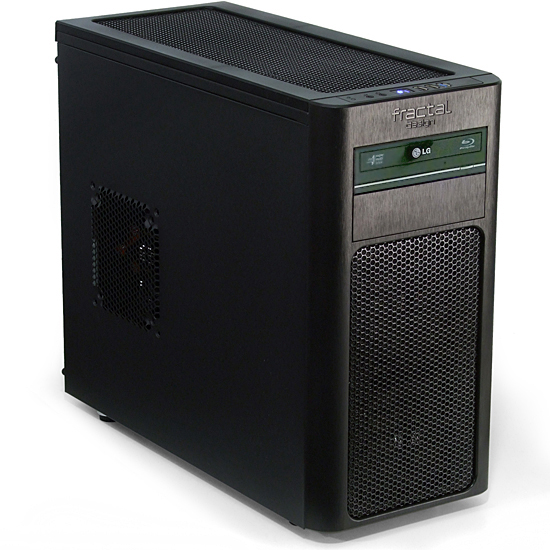Antec Kühler Vs. Corsair Hydro: Sealed Liquid CPU Coolers Compared
Offering a taste of liquid-cooled performance without the maintenance hassle, sealed-liquid systems are the logical choice for many high-end builds. We compare four options to an air-cooled standard to see if any of them stand out above the others.
Test Setup And Benchmarks
| Test System Configuration | |
|---|---|
| CPU | Intel Core i7-2600K (Sandy Bridge), 3.40 GHz, Four Cores, O/C to 4.75 GHz at 47x multiplier, 1.38 V |
| Motherboard | Asus Maximus IV Gene-Z: BIOS 0403 (06/27/2011), LGA 1155, Intel Z68 Express, O/C at 101.1 MHz BCLK |
| RAM | 8 GB G.Skill DDR3-2200: 4 x 4 GB, CAS 9-11-9-28, O/C at 1.65 V to DDR3-2158 CL 10-10-10-30 |
| Graphics | Nvidia GeForce GTX 580: 772 MHz GPU, GDDR5-4008 |
| Hard Drive | Crucial m4 256 GB, SATA 6Gb/s SSD |
| Sound | Integrated HD Audio |
| Network | Integrated Gigabit Networking |
| Power | OCZ-Z1000M 1000 W Modular: ATX12V v2.2, EPS12V, 80 PLUS Gold |
| Software | |
| OS | Microsoft Windows 7 Ultimate x64 |
| Graphics | Nvidia GeForce 280.26 |
| Chipset | Intel INF 9.2.0.1019 |
We loved our recent Liquid-Cooled Gaming System so much that we decided to use it again in today’s cooler tests.
We removed its liquid-cooled graphics system to make room for these coolers, and its original power supply was also moved to other projects. A single reference GeForce GTX 580 stands in for graphics cooling, while OCZ’s high-efficiency Z1000M gives it big power with little cable clutter.


| Benchmark Configuration | |
|---|---|
| Prime95 v25.8 | 64-bit executable, Small FFTs, eight threads |
| RealTemp 3.60 | Average core reading at full CPU load (60 minutes) |
| Galaxy CM-140 SPL Meter | Tested at 1/2 m, corrected to 1 m (-6 db), dB(A) weighting |
Get Tom's Hardware's best news and in-depth reviews, straight to your inbox.
Current page: Test Setup And Benchmarks
Prev Page Evga’s Air-Cooled Competitor Next Page Benchmark Results: Temperature, Noise, And Acoustic Efficiency-
compton You would have a hard time convincing me that my Noctua NH-U12P SE2 was anything but quiet and effective, but I know that many prefer sealed water solutions. My opinion is that for 1155 SB processors, even overclocked ones, you're better off with a high end air cooler.Reply -
soccerdocks comptonYou would have a hard time convincing me that my Noctua NH-U12P SE2 was anything but quiet and effective, but I know that many prefer sealed water solutions. My opinion is that for 1155 SB processors, even overclocked ones, you're better off with a high end air cooler.Reply
I completely agree. Pretty much the only reason to go with these sealed water coolers is to say that you water cooled your PC. -
gmcizzle Yes for SB processors, air is fine because they don't really get that hot. Now SBE, on the other hand, gets extremely hot and you need the best cooling you can get.Reply -
cmcghee358 soccerdocksI completely agree. Pretty much the only reason to go with these sealed water coolers is to say that you water cooled your PC.Reply
I agree 100%. And I do, in fact have an H70. And when I'm at work describing the epic beast of computers I build, and I show off some pics of mine; I always point to the H70 and go "Theres the radiator for the water cooler" /gasp!
-
drumsrule786 High end air is probably better than most sealed liquid coolers except for the H100. My H50 is alright but not nearly as good as I thought it was going to be when I first got it. Next build im definitely gonna go full custom water cooling though :DReply -
aznshinobi These coolers are terrible cooling/value, it's sad that consumers see "Water-cooling" (IMO this is "fake" water cooling in that it's all in a closed loop) and they think it'll cool the best. However the temps speak for itself, a $50 air cooler can practically, if not beat, a $80 closed-loop WC solution with the dBA being similar. Sad.Reply -
Lutfij did anyone else notice that the author as well as manufacturer's of these pseudo WC loops rerfer to the cpu contact plate as a cold plate...last time i checked a cold plate is what is used in a Peltier unit...:/Reply -
compton cmcghee358I agree 100%. And I do, in fact have an H70. And when I'm at work describing the epic beast of computers I build, and I show off some pics of mine; I always point to the H70 and go "Theres the radiator for the water cooler" /gasp!Reply
I think that's a perfectly good reason to buy any product. I like that I have a choice. But Noctua's tower coolers look pretty sexy too.
-
Darkerson Was thinking about getting the 620 for a future SB/IB build, but now Im not so sure. Anyway, thanks for the reviews!Reply

